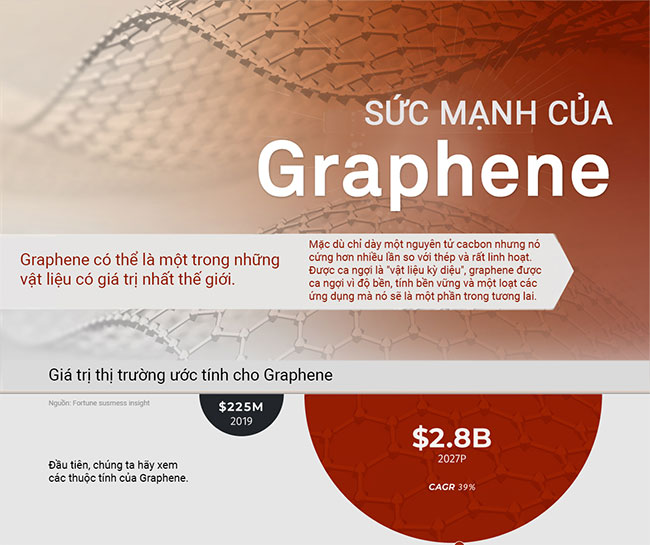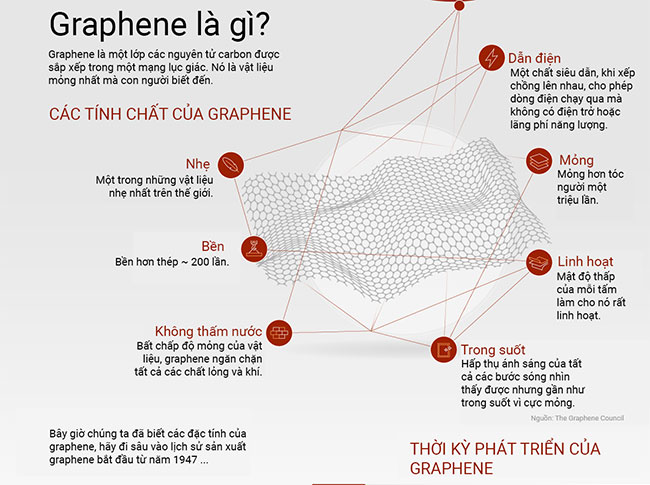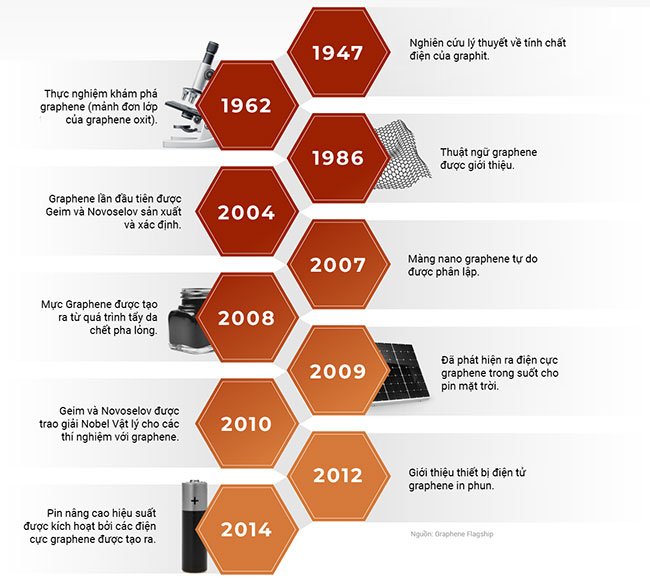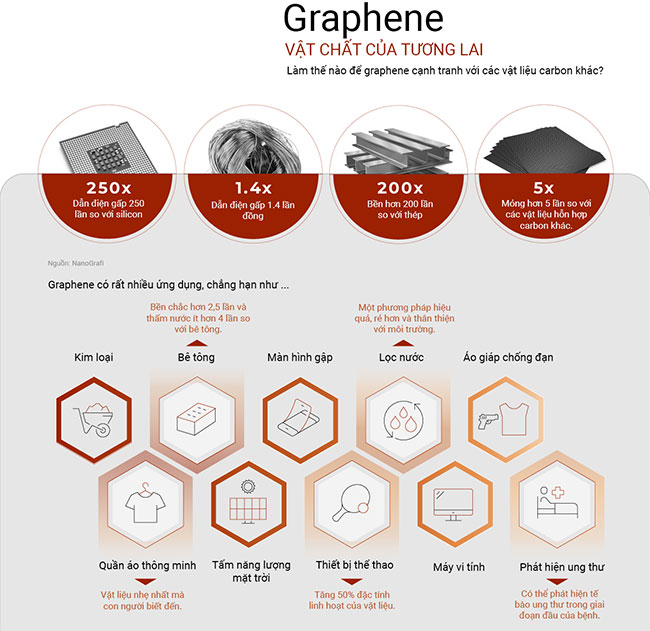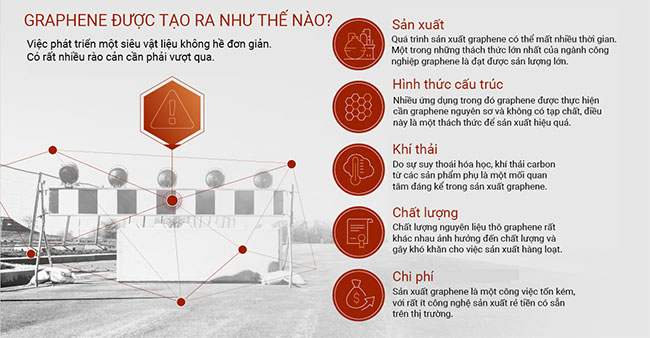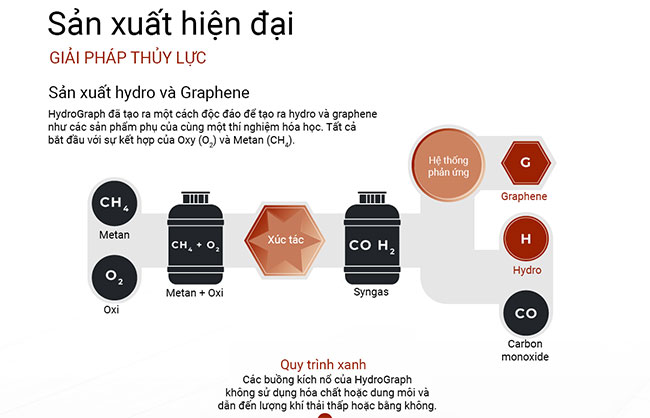There is a new miraculous material being applied and developed called graphene. Since it was first successfully isolated in 2004, graphene, with its honeycomb-like 2D structure and many fascinating properties, has captured the attention of materials scientists.
What You Need to Know About Graphene
This naturally occurring 1 mm thick carbon atomic crystal network has numerous applications and may one day help resolve the global water crisis.
Confidence in this material is so strong that, according to forecasts by Fortune Business Insights, its market value is expected to reach $2.8 billion by 2027.
In the infographic below, we are introduced to the super material graphene, including its properties, applications, history, and production methods.
What is Graphene?
Graphene is a single layer of carbon atoms tightly bonded in a hexagonal honeycomb lattice. It is the building block from which many layers of single-atom carbon can stack. Here’s a quick breakdown of its properties:
- It is the lightest material known to humanity, weighing only 0.77 milligrams per square meter.
- Despite its lightweight, it is 200 times stronger than steel.
- It is one of the strongest thermal and electrical conductors.
It also has the ability to absorb light evenly across the visible and near-infrared parts of the spectrum.
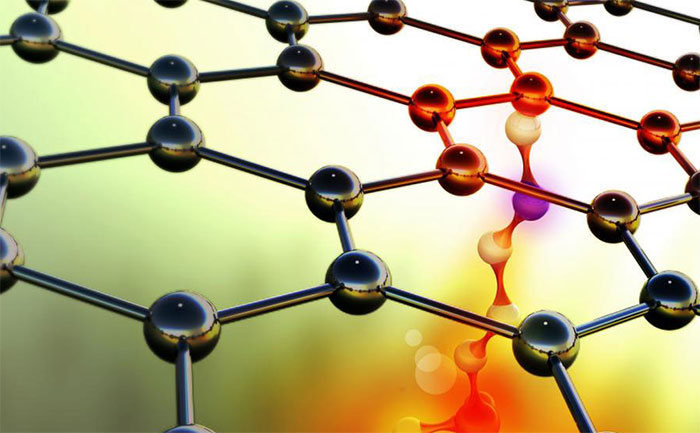
Graphene can help solve the global water crisis.
The Importance of Graphene in Future Applications
Science and technology are expected to advance rapidly in the future, and graphene could help bring that future sooner than we expect. Here are some promising graphene applications anticipated in the near future:
Air-derived Fuel
A team of UK researchers led by Nobel laureate Andre Geim has demonstrated that graphene can be used as a proton exchange membrane in fuel cells.
This discovery surprised many, as no one expected membranes to allow protons to pass through its tightly packed, single-atom hexagonal structure. Moreover, graphene membranes can be used to filter hydrogen from the atmosphere, enabling mobile fuel cells to operate using air.
Solving the Freshwater Crisis
Graphene could help tackle the global water crisis. Membranes made from graphene can be large enough to allow water to flow through while being small enough to filter out salt. In other words, these membranes could revolutionize desalination technology.
In fact, a type of graphene has been shown to be so effective at filtering water that it made samples from Sydney Harbour safe to drink after passing through the filter just once.
The Commonwealth Scientific and Industrial Research Organisation (CSIRO) has utilized “graphair” to make seawater drinkable after just one treatment.
A Rust-free World
Because it is nearly impermeable to water, one day, a graphene-based paint could be used to eliminate corrosion and rust. This is crucial as the estimated global cost of corrosion is $2.5 trillion annually.
Preserving Artwork from Fading
Graphene offers several material advantages: it can be produced in large, thin sheets; it blocks ultraviolet light; and it is impermeable to oxygen, moisture, and other corrosive agents.
Researchers believe it can prevent irreversible fading due to exposure to light and oxidizing agents (such as air). Their findings indicate that a single protective layer can prevent fading by up to 70%.
Why is This Miraculous Material Not Yet in Use?
Some production issues need to be addressed before widespread manufacturing can begin. One current challenge in mass production revolves around chemical vapor deposition (CVD). While this is the best method for producing single-layer graphene, it is not ideal in terms of scale.
These challenges also make mass production costly. It takes about $100 to produce one gram of graphene. Other methods are used for mass production but result in lower quality products and carbon emissions.
Addressing Graphene Production Issues
To tackle these problems, HydroGraph has developed a process for mass-producing graphene powder. In theory, this method is environmentally friendly and more efficient compared to other methods currently used in the market.
